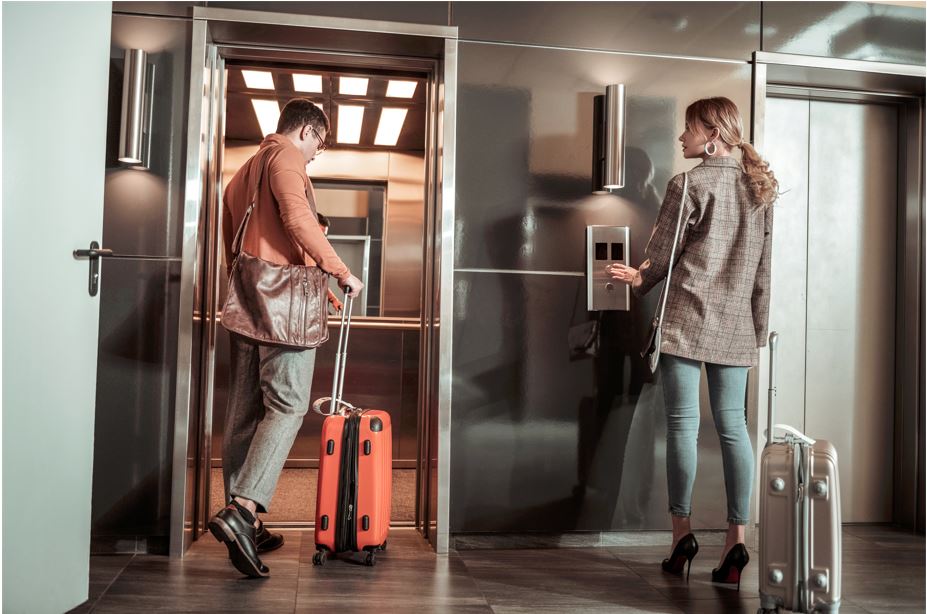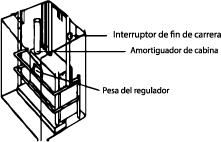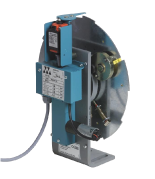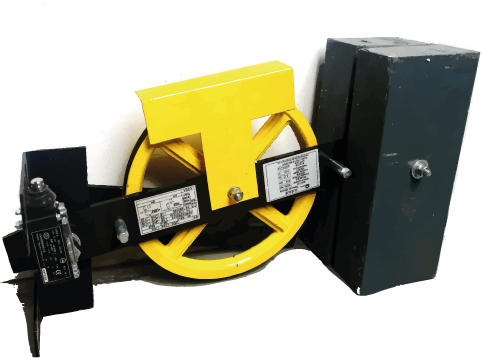
Sometimes we have days when we find ourselves overwhelmed by different commitments. In these circumstances, the worst thing that could happen to you would be that when you leave your apartment you will find that the elevator is not working. These types of situations usually happen in rainy seasons, and you will wonder why this happens?
Water leaks can affect the elevator, causing minor or serious flooding in the pit, humidity can also occur that alters the respective operation of the elevator and great inconvenience if it is not solved in time. In addition to the rains, these leaks can be caused by ruptures in the pipes or lack of waterproofing in the pit.
These damages can affect important components of the elevator, such as:
Flooding or stagnant water in the elevator pit

Elevator pit
The space starting from the lowest level of the elevator run is called the pit. This place must be flat and level; The shock absorbers or buffers are located in the pit, which will receive the car or the counterweight in case of failure of the automatic stop mechanisms and limit switches.
When the pit begins to have water leaks, it will puddle or even flood, causing deterioration and oxidation in:
Speed regulator
Regulator weight
Dampers or buffers
Electronic band and micros or switches that are connected to the elevator panel
End of travel limits responsible for stopping the elevator
All of these are crucial elements for the operation of the equipment, responsible for guaranteeing safety on each trip.
Damage to speed governor and governor weight:

Speed regulator
The speed regulator is a mechanism that controls the maximum speed of your elevator, mechanically and electronically blocking the equipment when it exceeds the established speed.
The consequences of water entering the speed regulator are:
The elevator will constantly slow down, leaving people trapped inside the elevator
Cause a short in the safety circuit.
- Speeds higher than required making trips for users more dangerous.
At the moment in which the security system identifies an inadequate speed in the regulator, it would activate the clamp, which will abruptly stop the elevator, in many cases this causes panic in the people who use the equipment and damage to the elevator rails. .

Regulator weight
The regulator weight is the element that works in conjunction with the speed regulator. It is made up of a pulley and steel cables, which mechanically and electronically block the elevator through the fall of the weight. Which proceeds to activate the elevator's parachute and a micro "switch" that electronically turns off the equipment. The weight of the regulator is installed on the guides or cabin at 50 cm from the lowest level of the elevator pit.
Water damage to the regulator weight would oxidize regulator components and reduce device performance; as a consequence the elevator would not have a mechanism which would stop the elevator.
Electronically, the weight of the regulator has a micro or "switch", which is connected to the safety circuit of the equipment; when water damages the damper weight it will also cause shorts in the connection cables and in the elevator control.
Oxidation and deterioration of pit dampers:

Elevator dampers
The shock absorbers are essential to reduce the impact of the cabin when it reaches the ground floor, these are located in the elevator pit. If they are damaged and oxidized by water, they will not act properly, causing considerable damage. The people inside would feel a much stronger impact because these elements are not in optimal conditions.
Damage to the electronic band of the elevator:

Electronic band
The memco electronic strip with infrared ray is a device that improves user safety, as it allows the car doors to be stopped while avoiding knocks.
The water can cause damage and interference in the sensors of the belt, coercing the inopportune closing of the doors and preventing a safe entrance to the elevator.
Limiter damage

End of stroke limit
To avoid leaks, it is advisable to waterproof the elevator pit; This consists of an application of waterproof coating in several layers to achieve the definitive effective insulation of the floor and walls. In this way, the perfect sealing of the pit is achieved, preventing water from damaging the operation of the lift.
Conclution
We can conclude that water is a great enemy for elevators, as it affects the electronic elements causing shorts, and the mechanical components causing corrosion. It is always advisable to carry out reviews to identify possible leaks and maintain periodic maintenance carried out by a specialist elevator company. For this reason, you must be cautious and take the appropriate measures so that damage does not occur with your equipment that affects the life and integrity of those who use it.
On many occasions, it is not discovered in time that the elevator pit is flooded until a review is made. For this reason, it is essential to carry out regular maintenance.

Do you know how water causes damage to your elevator?
Be informed and avoid untimely damage
Ascensores Mantenimiento Repuestos foso impermeabilización